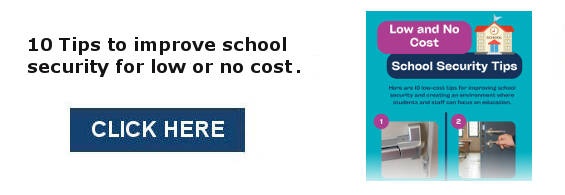Security plays a vital role in everyday life—whether you're an office worker, a shopper at a local center, or a student heading to school. While it's easy to grow complacent, we should never take the security measures in our workplaces, businesses, or schools for granted.
When someone steps onto a facility’s property, security features like surveillance, lighting, signage, and landscaping play a vital role in creating a safe environment. This blog explores how these elements—and other strategic enhancements—can strengthen a building’s perimeter security.
Why Perimeter Security Matters
A facility’s safety starts at its perimeter. A strong perimeter security plan is the first line of defense, protecting people, property, and information. By taking a proactive approach, organizations can reduce risk, improve safety, and boost operational efficiency.
Many perimeter security strategies are cost-effective and scalable, making them ideal for addressing the unique risk management needs of any facility.
Enhancement Strategies Overview
Enhancement strategies focus on strengthening safety measures around the outside of a building. They help prevent unauthorized entry and mitigate potential threats. This blog breaks down perimeter security into three key categories:
- Exterior Physical Security
- Electronic Security
- Policies and Procedures
Implementing a coordinated strategy across these areas can significantly improve a building’s perimeter protection.
Exterior Physical Security
Exterior physical security includes both passive and active deterrents designed to limit unauthorized access and protect people and assets..
Examples include:
- Fencing — Fences should be secure, well-maintained, and designed with limited access points to help deter trespassing. Chain-link and anti-climb options can effectively prevent both human and animal intrusion while maintaining a clean appearance and preserving open sightlines to the surrounding area.
- Territorial Reinforcement — Clearly defining the boundaries between public areas (such as surrounding property), semi-public spaces (like sidewalks), and private zones (restricted building areas) fosters a sense of ownership and control. This approach helps deter trespassing by increasing visibility and the likelihood that unauthorized behavior will be noticed.
- Lighting — Properly placed LED lighting around parking areas and building exteriors enhances visibility and eliminates dark spots. Fixtures should be mounted at least 14 feet high and fitted with break-resistant covers, ensuring that colors and facial features remain visible from up to 30 feet away in low-light conditions.
- Landscaping—Utilizing maintenance crews for routine groundskeeping can improve visibility and deter threats. Tree limbs should be trimmed to a height of at least eight feet and shrubbery to three feet or less to ensure clear sightlines and prevent obstructions of windows.
Electronic Security
Electronic systems use technology to monitor and control access to the facility while helping detect and respond to threats.
It uses various tools and systems to maintain strong safety in both physical and digital spaces. These tools are crucial for effectively monitoring, detecting, and responding to emergencies.
Key measures include:
- Access Control — Access control measures range from traditional lock-and-key systems to advanced electronic solutions. These systems regulate entry and help maintain the integrity of a building’s perimeter. To enhance security, all secondary doors should remain closed and locked, ensuring visitors enter only through the main entrance.
- Audio/Video Intercom — A recommended best practice is to install an intercom buzzer at the main entrance, requiring visitors to request access. This allows staff to verify the visitor’s identity and purpose before remotely unlocking the door, maintaining control over who enters the building. Such systems are ideal for non-peak hours of operation.
- Surveillance — Strategically placed cameras at entrances, parking areas, and secondary doors provide continuous monitoring. Closed-circuit television (CCTV) allows employees to observe visitors before they approach the entry point, helping identify potential threats early.
- Alarm Systems — Alarm systems offer both preventive and responsive protection. They deter after-hours break-ins and can alert emergency responders in the event of a breach. Integrated systems can trigger automated responses—such as activating lights or securing specific areas—when an alarm is triggered.
Policy and Procedures
Policies provide general guidelines for how an organization addresses specific issues, while procedures offer step-by-step instructions for completing routine tasks. Effective procedures should clearly define responsibilities, outline each step in the process, and specify reporting lines.
This section covers key documents and protocols that support perimeter security, including security policies, crisis management plans, floor plans, and evacuation or reunification procedures. Below are examples of policies and procedures that help enhance perimeter protection:
- Opening and Closing the Building — Facility policies should clearly designate who is responsible for opening and closing the building, along with the steps to follow. Keyholders must follow a strict routine, ensuring that all secondary doors are locked and alarms are activated at closing and deactivated in the morning.
- General Maintenance — Organizations with maintenance crews should adopt policies that support exterior upkeep. Regular landscaping is essential for safety and visibility. Maintenance policies should include trash removal schedules and require immediate action in response to graffiti or vandalism.
- Access Control — A formal access policy should govern how employees enter the building. Key cards should include the employee’s name and photo for easy identification. Former employees must return their keys, and any lost or returned cards must be deactivated immediately to maintain security.
- Deliveries and Vendors — Delivery and vendor policies should require all personnel to show identification upon entry and follow a consistent drop-off process. These measures help staff identify suspicious activity and prevent unauthorized access to the building.
Final Thoughts
While each individual strategy offers value, combining them into a comprehensive security plan significantly strengthens a building’s perimeter protection. An integrated approach ensures that physical measures, technology, and procedures work together to deter threats and respond effectively to incidents.
Conducting routine security assessments allows organizations to identify vulnerabilities and stay ahead of evolving risks. A professional security assessment can tailor a strategy to the specific needs of your facility—enhancing safety across both the perimeter and interior.
By investing in layered security measures and implementing clear safety protocols, organizations not only reduce risk but also create a sense of confidence and peace of mind for employees, students, visitors, and families.
Ultimately, a proactive and well-coordinated perimeter security plan lays the foundation for a safer, more secure environment—one where people feel protected the moment they set foot on your property.



.jpg)

-1.jpg)
.jpg)
.jpg)
.jpg)
-2.jpg)
.jpg)


.jpg)
.jpg)
.jpg)
.jpg)
.jpg)

